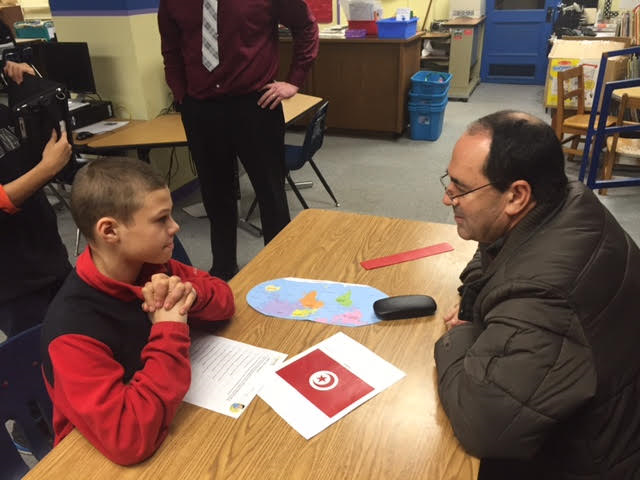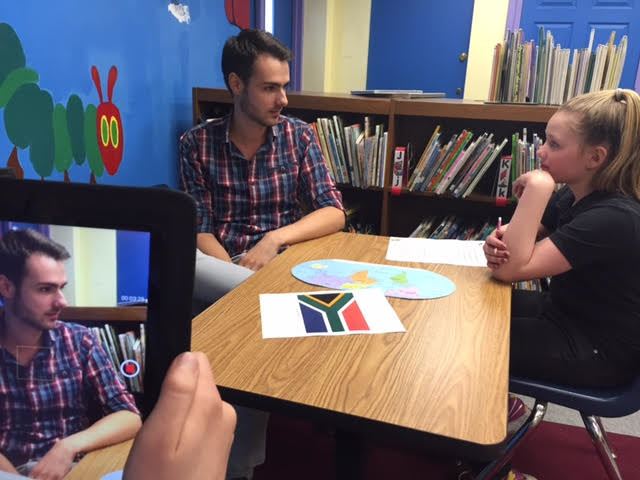Education in the Digital Age: February 8, 2016 Visit Summary
As an intern at the Greater Cincinnati World Affairs Council, one of the things that I was most looking forward to was interacting with international visitors and watching the ways in which they interact with and learn from American businessmen and women, academics, and other professionals. On Monday, February 8, 2016 I had the opportunity to follow along with an international program that we were hosting called “Education in the Digital Age.” This program, centered around incorporating technology in the classroom and using said technology to stimulate students and learning, brought together academics and professionals from around Cincinnati, as well as participants from around the world.
When I arrived to William Henry Harrison High School at 7:15a.m. on Monday morning, I was struck by two distinct things: the size of the campus and the diversity of the program participants. Harrison High School’s ability to motivate students with technology, while being located in a rural part of Cincinnati, was an incredible resource for the visitors. During the extensive visit of the campus, we were able to see Harrison’s auditorium complex, including its sound and lighting technology (technology that students get to learn how to use), as well as view its live morning announcement television show. You could tell that the international visitors got a kick out of this; seeing a live news broadcast in a rural high school, hosted by two high school students for that matter, had the visitors quite entertained.
Three other prominent parts of the visit to Harrison High School included a visit to a bio-medical classroom, engineering classroom and information technology classroom. We certainly did not have classes like that when I was in high school…and I graduated from high school four years ago! Seeing the high school students test their own lung capacity and blood pressure, build robots and motorized wheel chairs, and create their own video games really portrayed the changes that technology has fostered in the classroom.
 At the end of the visit, the participants had the opportunity to ask Principal Davis Baker questions and provide comments on their visits up to that point. The visitors made interesting comparisons between this high school and their education centers back at home, as well as the schools and colleges that they had seen elsewhere in the United States. One key thing they noticed here was that the students seemed to really be enjoying themselves as school; they were happy to be there and excited to learn, characteristics that may be lacking in other localities.
At the end of the visit, the participants had the opportunity to ask Principal Davis Baker questions and provide comments on their visits up to that point. The visitors made interesting comparisons between this high school and their education centers back at home, as well as the schools and colleges that they had seen elsewhere in the United States. One key thing they noticed here was that the students seemed to really be enjoying themselves as school; they were happy to be there and excited to learn, characteristics that may be lacking in other localities.
At the end of the day, I went with the visitors to their last appointment of the visit; an after-school program for homeless children called UpSpring. Using iPads, the children interviewed the visitors, asking things like what is the food like in your country and what does your flag represent. Watching the visitors discuss their countries with the children was a very cool experience—the quieter group members were very open and talkative with the children and everyone ended up joking and laughing. Being able to end the program with an interactive experience that combined learning from American students and learning from international citizens was an exceptional blend of what the Greater Cincinnati World Affairs Council aims to do, and I am glad that I got to participate in it.

Written By: Julia Prus, Global Exchange Intern
Check out what WCPO had to say about this visit by clicking here!


